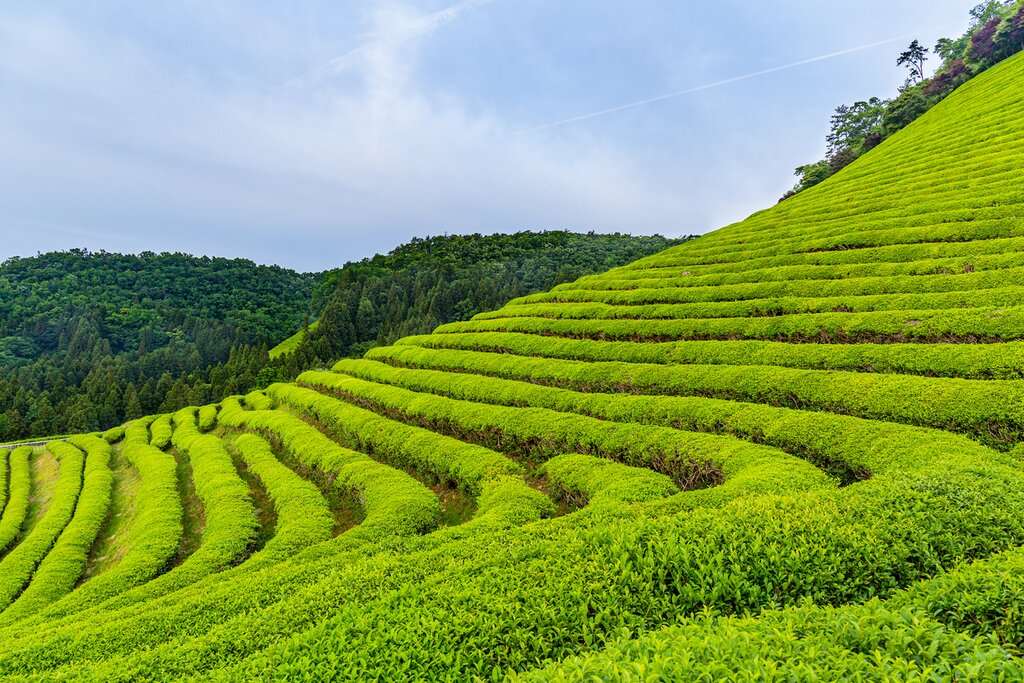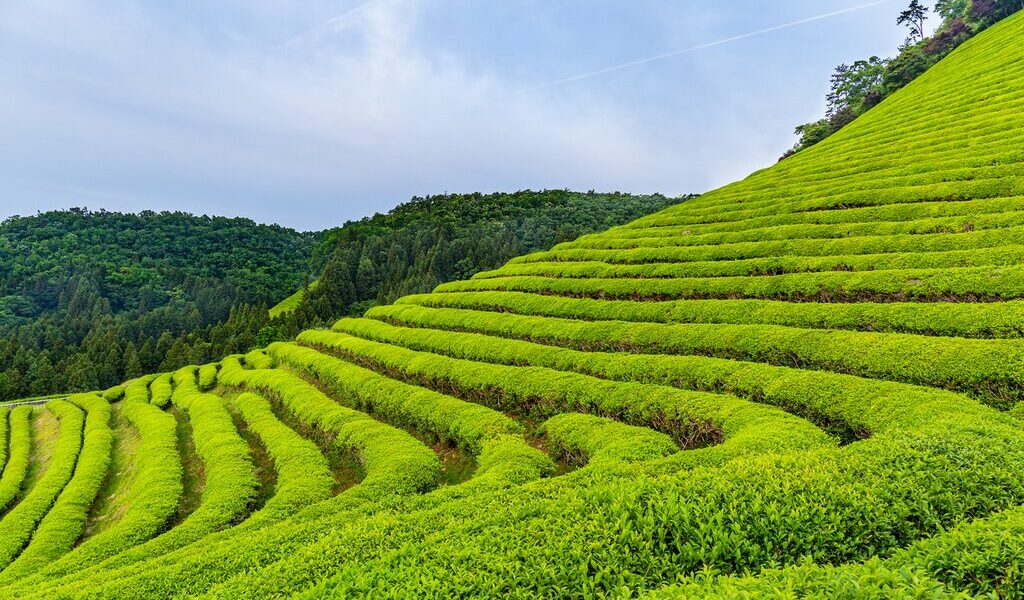
Explore South Korea at the tail end of spring in May. With cherry blossom crowds dissipated and the summer holidays yet to arrive, May offers the perfect opportunity to experience warm days and picturesque landscapes in a quieter atmosphere. Hit the major highlights on a cross-country tour of South Korea’s top cities, or appreciate its natural beauty by visiting tea plantations and bamboo forests.
South Korea in May: A Comprehensive Travel Guide
## Weather in May
As May unfolds, South Korea transitions from the refreshing embrace of spring towards the warmer, more humid days of summer. The conclusion of spring is marked by gradual increases in both temperature and rainfall throughout the month, hinting at the approaching summer season. Despite this shift, May remains a particularly pleasant time to visit, offering a window of comfortable weather before the full heat of summer arrives. Visitors can expect predominantly sunny skies, creating ideal conditions for outdoor exploration.
Temperatures in May range from mild to warm, providing a comfortable climate for a variety of activities. The average daytime low temperature sits around 52°F (11°C), while the average high reaches a comfortable 72°F (22°C). These temperatures are perfect for enjoying the outdoors without the extremes of heat or cold. During sunny days, short sleeves are generally sufficient, allowing you to soak in the warmth of the Korean sun. However, as evenings approach, a light jacket may be necessary to ward off any lingering chill. Similarly, the occasional spring rain shower might call for an umbrella to keep you dry and comfortable.
While the iconic cherry blossom season has drawn to a close by May, the landscapes of South Korea burst forth with vibrant shades of green. The lush greenery provides a stunning backdrop for outdoor adventures and creates a picturesque setting for exploring the country’s natural beauty. From rolling hills to verdant forests, the landscapes of South Korea are at their most vibrant in May.
It is also important to note that spring in South Korea can sometimes bring yellow dust storms originating from the distant Gobi Desert. These storms can affect air quality, particularly in urban areas. It is advisable to monitor air quality forecasts during your visit, especially if you plan to spend time in larger cities. Pollution in these cities can sometimes combine with the yellow dust particles, resulting in smoggy conditions that may impact respiratory health. Taking precautions and staying informed will help ensure a comfortable and healthy trip.
## Crowds and Costs in May
May occupies a unique position in South Korea’s tourism calendar, falling between two of the busiest periods: the peak of cherry blossom season in April and the start of the summer holiday in June. Consequently, the crowds in May tend to be lighter compared to the preceding and following months. This respite from the peak season crowds makes May an exceptionally appealing time to experience the country’s charms, with a plethora of spring festivals and outdoor activities to enjoy. The reduced congestion allows for a more relaxed and immersive travel experience.
The pleasant weather in May continues to attract a significant number of visitors, but the overall atmosphere is less frenetic than during the peak seasons. The balanced combination of comfortable weather and manageable crowds makes May an ideal time to explore South Korea’s cultural and natural attractions without feeling overwhelmed.
Savvy travelers can often capitalize on the shoulder season lull by securing advantageous deals on accommodations and airfare. Prices tend to be more competitive in May compared to the higher rates typically seen in June, just before the summer season begins. By booking in advance and taking advantage of special offers, you can significantly reduce your travel expenses and make your trip to South Korea even more affordable.
## Where to Go in South Korea
For those with a penchant for urban exploration, May offers an opportune moment to explore South Korea’s premier tourist destinations in major cities such as Seoul and Busan before the influx of summer crowds. These cities provide a vibrant mix of ancient history, modern culture, and culinary delights.
In the bustling metropolis of Seoul, immerse yourself in the rich tapestry of ancient Korean history at the captivating Bukchon Hanok Village, a preserved traditional Korean village with charming architecture. Explore the majestic Changdeokgung and Gyeongbokgung palaces, each offering a glimpse into the grandeur of Korea’s royal past. For a more recent historical perspective, embark on a guided tour to the Demilitarized Zone (DMZ), the intriguing “no man’s land” that has separated the two Koreas since the Korean War.
In the vibrant coastal city of Busan, explore the colorful and artistic Gamecheon Culture Village, often referred to as the “Machu Picchu of Busan,” with its vibrant houses cascading down the hillside. Relax on the sandy beaches and soak up the sun, or indulge in a delectable seafood feast at the bustling Jagalchi Market, where you can sample the freshest catches from the sea.
For outdoor enthusiasts, Seoraksan National Park, often likened to the Yosemite of South Korea, beckons with its stunning natural beauty. Choose from a myriad of hiking trails, catering to various skill levels, and immerse yourself in the park’s breathtaking landscapes, featuring towering peaks, cascading waterfalls, and lush forests.
To experience a comprehensive cross-country road trip showcasing South Korea’s most iconic sights, consider dedicating a few days to each of the country’s four largest cities. Upon arrival at Incheon International Airport, begin your journey by spending two to three days exploring the dynamic Seoul Capital Area, including the verdant parks of Incheon and the iconic Gyeongbokgung Palace in Seoul. Next, venture south to Daegu, a vibrant artistic and cultural hub recognized as a UNESCO City of Music, where you can immerse yourself in the city’s thriving arts scene. Conclude your trip in Busan, a mere 35-minute train ride from Daegu, where you can stroll along pristine beaches and explore bustling traditional Korean markets.
Alternatively, to truly appreciate South Korea’s captivating natural beauty, journey to the enchanting tea plantations of Boseong in the southern region. While the verdant tea fields maintain their lush greenery year-round, they are particularly stunning in late spring and summer. Travelers can admire the picturesque countryside, visit the Korea Tea Museum to learn about the history and production of Korean tea, and indulge in delectable green tea ice cream and other tea-flavored delicacies. After dedicating one to two days to exploring Boseong, embark on short trips to several nearby outdoor destinations, including the serene bamboo forests of Damyang (approximately an hour by car) and the scenic hiking trails of Wolchulsan National Park (approximately 45 minutes by car).
## What to Do in May
Outdoor activities, including hiking, camping, and glamping, are immensely popular throughout the springtime in South Korea, and the mild weather of May renders these activities particularly appealing for visitors. Discover South Korea’s premier hiking destinations, such as the picturesque trails of Jeju Island, home to the breathtaking Hallasan National Park. This island, nestled in the Korea Straits, has been designated as a natural UNESCO World Heritage Site due to its unique system of lava tubes. Experienced hikers can challenge themselves by embarking on a trek to the summit of Hallasan Mountain, South Korea’s tallest peak at 6,400 feet (1,950 m), which bursts into a riot of color in the spring with hundreds of blooming azaleas.
May is also an ideal time to immerse yourself in the vibrant atmosphere of outdoor festivals, including the Boseong Aromatic Tea Festival and the Damyang Bamboo Festival in the South Jeolla province. These festivals celebrate the country’s iconic natural resources and provide visitors with a unique opportunity to appreciate South Korea’s stunning forests and picturesque countryside. For a different kind of outdoor experience, visitors of all ages will delight in attending the Haeundae Sand Festival on the beaches of Busan, featuring awe-inspiring, larger-than-life sand sculptures that must be seen to be believed.
## Events in May
**Jindo Miracle Sea Road Festival, Jindo:** Taking place in late April or early May, this extraordinary natural phenomenon causes the Yellow Sea to recede by 138 feet (42 m), creating a walkable path between the islands of Jindo and Modo. Tourists flock to the area to witness and celebrate the “miracle” of the sea parting.
**Boseong Aromatic Tea Festival, Boseong:** Immerse yourself in the birthplace of the Korean tea industry during Boseong’s Aromatic Tea Festival. Here, you can participate in picking tea leaves, learning the art of tea making, and sampling a variety of local snacks and tea-flavored delicacies.
**Damyang Bamboo Festival, Damyang:** Explore South Korea’s largest bamboo forest during this early May festival, which celebrates the beauty and versatility of the bamboo plant. The festival features exhibits, demonstrations, and cultural performances that highlight the significance of bamboo in Korean culture.
**Haeundae Sand Festival, Busan:** This festival, held in late May or early June on one of the country’s most popular beaches, showcases incredible life-size sand sculptures, dazzling fireworks displays, captivating concerts, and a wide array of other exciting activities.
B-2319

